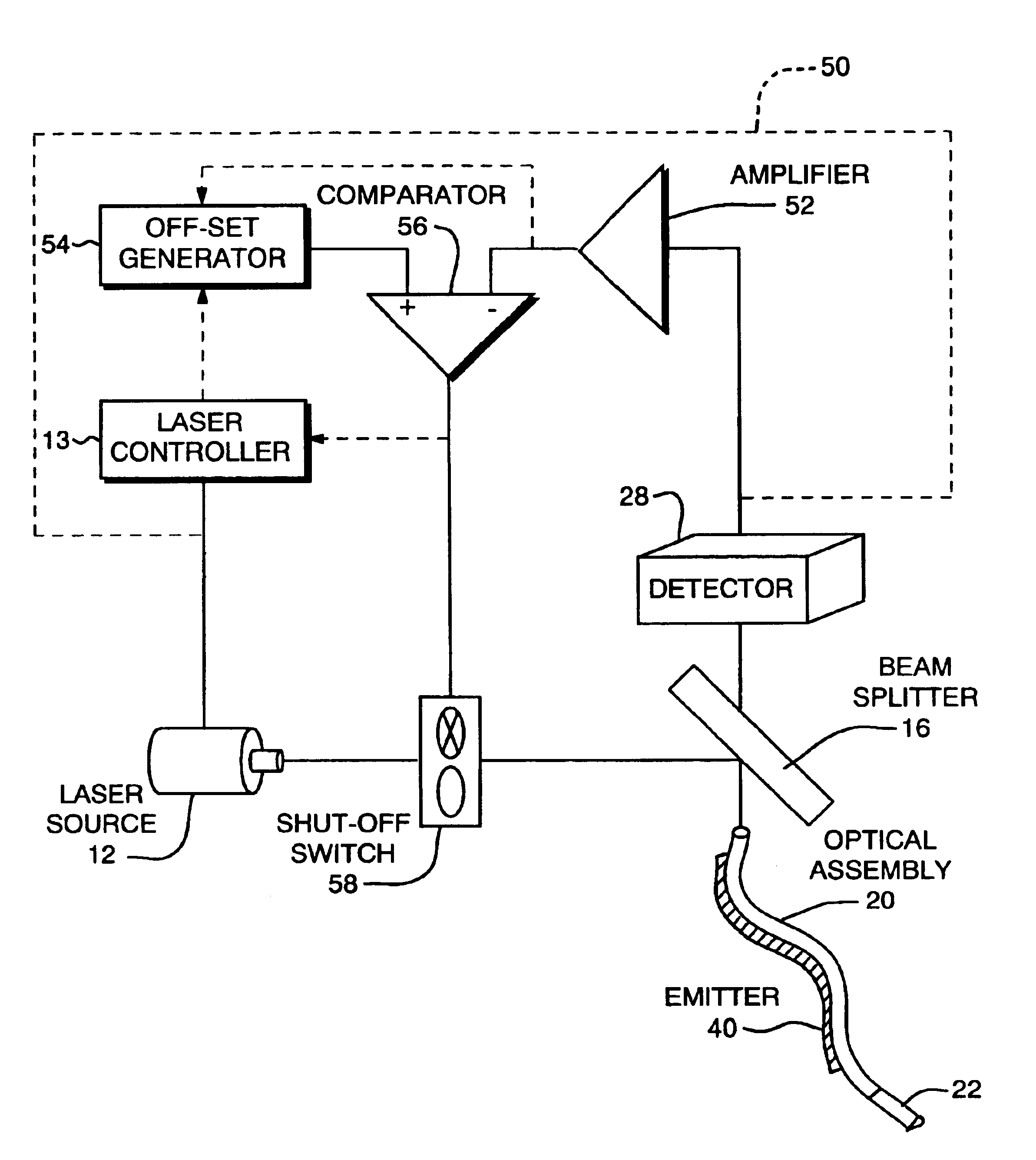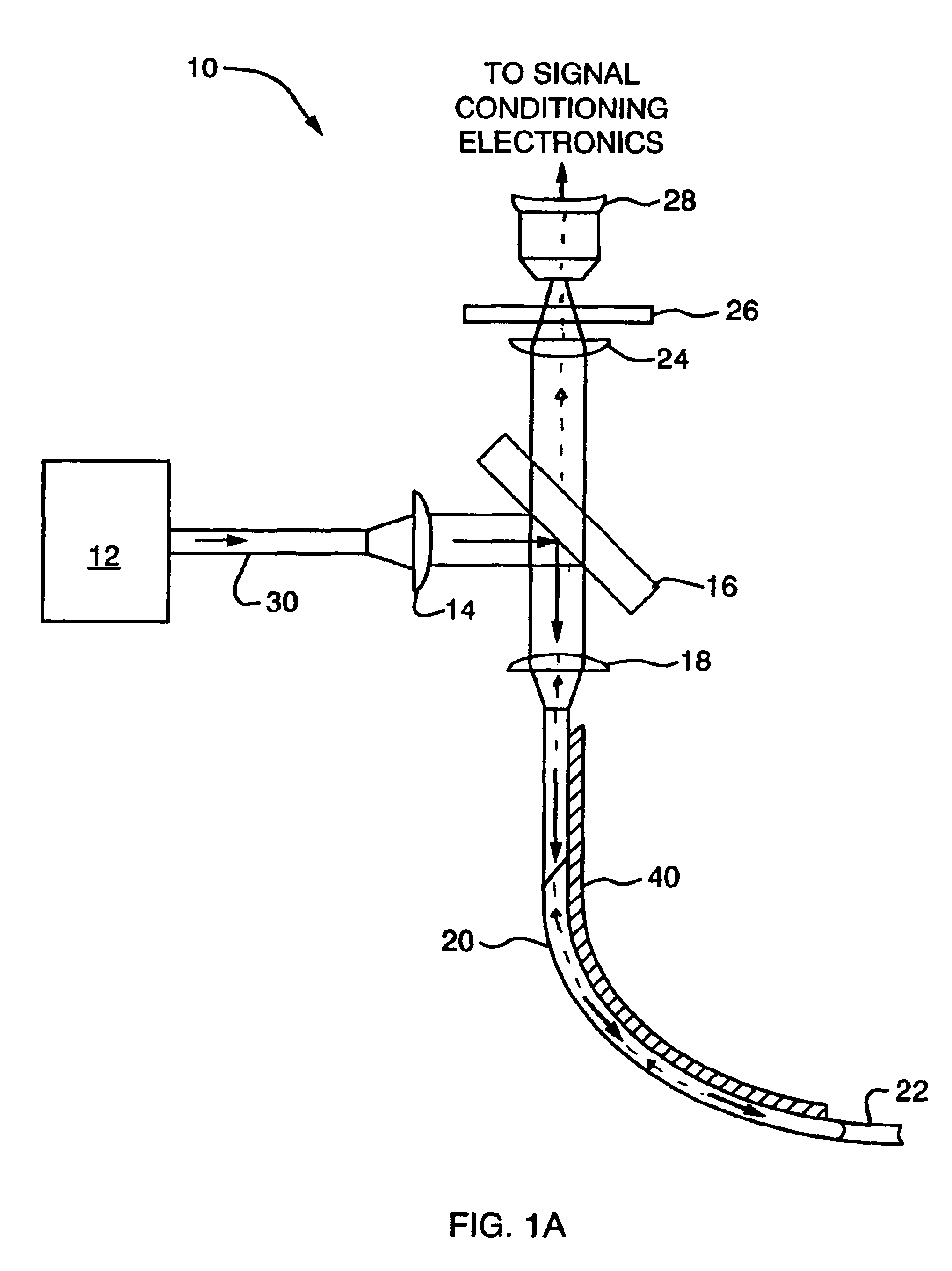Safety shut-off device for laser surgical instruments employing blackbody emitters
a blackbody emitter and safety shut-off technology, applied in the field of phototherapy, can solve the problems of prone to breakage, fragile optical fibers, certain limitations in the use of optical fibers, etc., and achieve the effect of greatly enhancing the sensitivity of fault detection
- Summary
- Abstract
- Description
- Claims
- Application Information
AI Technical Summary
Benefits of technology
Problems solved by technology
Method used
Image
Examples
Embodiment Construction
[0028]The present invention is directed to optical systems combined with blackbody emitters that have mechanisms for monitoring and shutting down a therapeutic laser before device failure. The systems are adapted for both new and existing laser systems to enhance the effectiveness of laser surgical delivery systems by alleviating the risk of damage to the delivery system due to the increased power. Overall, the optical system provides a simple, reliable, safety shut-off device for optical systems. The practice of the present invention employs, unless otherwise indicated, conventional methods of optics, laser technology, and conduction physics.
[0029]The present invention is based, at least in part, on a discovery that a blackbody can be adapted to be used as an efficient monitoring conduit for therapeutic radiation. Blackbody radiation, preferably at wavelengths ranging from about 1.1 micrometers to about 2.2 micrometers, is a useful indicator of changes in optical elements, especial...
PUM
| Property | Measurement | Unit |
|---|---|---|
| wavelengths | aaaaa | aaaaa |
| wavelengths | aaaaa | aaaaa |
| emissivity | aaaaa | aaaaa |
Abstract
Description
Claims
Application Information
 Login to View More
Login to View More - R&D
- Intellectual Property
- Life Sciences
- Materials
- Tech Scout
- Unparalleled Data Quality
- Higher Quality Content
- 60% Fewer Hallucinations
Browse by: Latest US Patents, China's latest patents, Technical Efficacy Thesaurus, Application Domain, Technology Topic, Popular Technical Reports.
© 2025 PatSnap. All rights reserved.Legal|Privacy policy|Modern Slavery Act Transparency Statement|Sitemap|About US| Contact US: help@patsnap.com



